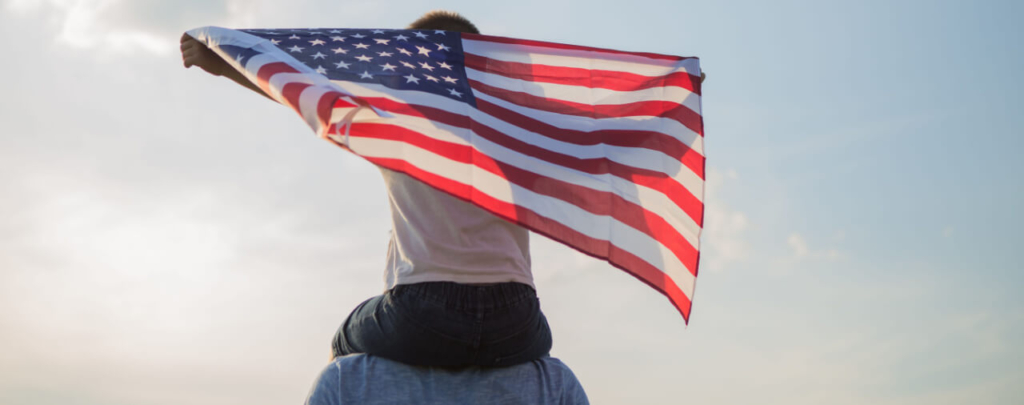- Introduction
- Overview of the Former Employment-Based Sixth Preference Category
- Factual and Procedural History of Matter of Sonegawa: 12 I&N Dec. at 612-613
- District Director Denial: 12 I&N Dec. at 613-14
- Regional Commissioner Determines that Petitioner Had Ability to Pay: 12 I&N Dec. at 614-15
- Analysis
- Conclusion
Introduction
On August 14, 1967, the former Immigration and Naturalization Service (INS) published the decision of an INS regional commissioner in Matter of Sonegawa, 12 I&N Dec. 612 (Reg. Comm. 1967). The decision concerned whether a petitioner seeking to accord status under the former employment-based sixth preference category had the ability to pay the beneficiary, notwithstanding the petitioner’s running a net profit of only $280 in 1966, while the petition was pending. The Regional Commissioner assessed evidence in the record beyond the petitioner’s net income and assets in 1966, and ultimately concluded that the evidence established that the petitioner did in fact have the ability to pay the beneficiary.
Although the employment-based sixth preference category no longer exists, Matter of Sonegawa remains a relevant and highly influential decision in the ability to pay context for employment-based petitions in general. In fact, it is one of the most heavily cited to administrative precedent decisions in immigration law. In this article, we will examine the importance of the Matter of Sonegawa precedent in the ability to pay context.
Overview of the Former Employment-Based Sixth Preference Category
The immigrant visa petition in Matter of Sonegawa was filed to accord status under former INA 203(a)(6). Former INA 203(a)(6), which set forth the former employment-based sixth preference category, was phased out of the INA effective October 1, 1991. Former INA 203(a)(6) allotted a limited number of visas “to qualified immigrants who are capable of performing specified skilled or unskilled labor, not of a temporary or seasonal nature, for which a shortage of employable or willing persons exists in the United States.” Petitions that were filed under INA 203(a)(6) before October 1, 1991, and approved before that date, were deemed petitions approved to accord status under current INA 203(b)(3), which sets forth the employment-based third preference category. 8 CFR 204.5(f).
Factual and Procedural History of Matter of Sonegawa: 12 I&N Dec. at 612-613
The only issue before the Regional Commissioner was whether the petitioner had the ability to pay the salary of the beneficiary, for the petition was otherwise approvable. Thus, we will limit our discussion of the factual and procedural history to focus on the ability to pay issue.
The petitioner was the owner and proprietor of a fashionable “custom dress and boutique” shop in Pasadena, California. The shop specialized in women’s clothes “of oriental fabric and design.” The petitioner’s shop had been established in 1956 and did an annual gross business of about $100,000. The petitioner worked at the shop and employed four individuals full time and one to four individuals part-time.
The petitioner sought to employ the beneficiary, a native and citizen of Japan, as an “assistant designer for oriental arts.” The petition stated that the beneficiary would be paid $3.00 an hour for a 40-hour work week. Based on the evidence in record, the Regional Commissioner stated that “it is well established that the beneficiary is qualified for performance of the duties of the position.”
District Director Denial: 12 I&N Dec. at 613-14
The Regional Commissioner explained that in order for an employment-based sixth preference petition to be approved, the petitioner must have “the financial ability to meet the wage requirements of the certified job offer.” The District Director denied the petition upon concluding that the petitioner did not have the financial ability to pay the proffered wage. The Regional Commissioner quoted from the Director’s denial order:
Your 1966 income tax return indicates a net business profit of $280. In your application to the Secretary of Labor for the certification required by section 212(a)(14) you alleged that the beneficiary will be employed eight hours per day, 40 hours per week, at a salary of $3.00 per hour. You will then be obliged to pay the beneficiary a yearly wage of $6,240 which is considerably in excess of the net profit for 1966.
Thus, the Director’s denial was based primarily on his assessment that the petitioner’s 1966 income tax return evinced that the petitioner did not have the ability to pay the beneficiary the offered wage of $6,240. The petitioner sought review of the Director’s decision.
Regional Commissioner Determines that Petitioner Had Ability to Pay: 12 I&N Dec. at 614-15
The Regional Commissioner would conclude, based on an assessment of the evidence in record, that the petitioner did have the ability to pay the beneficiary, notwithstanding the petitioner’s low net business profit in 1966. In reaching this conclusion, the Regional Commissioner assessed a number of factors relating to the petitioner’s business.
The Regional Commissioner noted that at the time of adjudication, the petitioner had been in business for 11 years. No evidence in the record indicated that the petitioner would not continue to be in business for many more years. The Regional Commissioner found that the fact the petitioner was seeking to employ a new oriental clothes designer was evidence in and of itself that the petitioner planned to continue her business.
The Regional Commissioner found that the petitioner had been making a living for herself and employing four to eight full- and part-time employees without any evidence of financial difficulties.
The petitioner addressed 1966 — the year which led to the Director’s denial — in some detail. The petitioner stated that 1966 was not a good year for her business. The petitioner had moved her business to what she described as a “better location.” As a result of the move, however, the petitioner had to pay double rent for five months during 1966, meaning she had paid rent for both her new business location and her old business location,. The petitioner also had to pay “large moving costs” to move her business. Furthermore, the petitioner was unable to conduct regular business for part of 1966 due to the move.
The petitioner’s move and associated issues were resolved in 1966. The petitioner submitted into evidence a financial statement prepared by an accounting firm in Pasadena dated May 31, 1967. The financial statement showed that the petitioner made a net profit of $4,774 from January 1, 1967 to May 31, 1967.
Regarding 1966, the petitioner presented her income tax returns for the year on appeal. The returns showed that she had paid over $19,000 in wages to four regular employees and four part-time employees.
The petitioner added that employing the beneficiary, an authentic oriental designer from Japan, would substantially increase her business, both in terms of its actual number of clients and also the number of high-paying clients. Furthermore, the petitioner stated that she needed the beneficiary’s services both because she often had to be away from her business and because business had already increased at the new location.
Evidence indicated that the petitioner’s dress shop was well-recognized in Pasadena. The Regional Commissioner cited to, for example, a local magazine article discussing both the petitioner and her business. The petitioner also submitted evidence in the form of a scrapbook showing that she was well known for her designs and fashions and considered to be outstanding in her field. This evidence included her creations being featured in Time Magazine, Look Magazine, the Fashion Service Review, and other fashion magazines. She made gowns for the Miss Universe of the Long Beach beauty pageant. The petitioner had movie actresses and society matrons as clients.
The petitioner made numerous appearances at design and fashion shows throughout the United States. The petitioner lectured at colleges and universities in California and at home economic institutes about design and fashion. She received fees for these appearances that were not included in the income of her store.
Based on the foregoing factors, the Regional Commissioner concluded that the fact that the petitioner was only able to show a net profit of $280 for the calendar year of 1966 did not preclude her from establishing that she would be able to pay the beneficiary the proffered wage. In light of all the circumstances and the evidence in the record, the Regional Commissioner found “that the petitioner’s expectations of continued increase in business and increasing profits are reasonable expectations and that it has been established that she has the ability to pay the beneficiary the stipulated wages and meet the conditions of the certification.”
For these reasons, the Regional Commissioner sustained the petitioner’s appeal and granted the petition.
Analysis
Matter of Sonegawa is an important precedent in the ability to pay context, although it should not be read too broadly. The decision specifically addresses the types of evidence a petitioner may submit to establish that he, she, or it has the ability to pay the beneficiary notwithstanding net profits for a specific period that may call the ability to pay into question.
The petitioner in Sonegawa submitted compelling evidence to establish that she had the ability to pay the proffered wage. First, the petitioner provided a detailed accounting of her business situation in 1966, showing not only that her business’s low net profits was attributable to unique events that would be unlikely to reoccur, but also that the reasons for the low net profit were related to her efforts to grow the business. Notwithstanding the circumstances of 1966, the petitioner was still able to pay her employees. The petitioner’s tax records for the first several months of 1967, as well as her history of having maintained her business without difficulty since 1956, provided further evidence that her business’s low net profit in 1967 was an aberration.
In addition to explaining the low net profit in 1966, the petitioner also established that her expectations that her business would expand and her profits increase in coming years were reasonable. To this effect, the petitioner submitted evidence regarding her business’s history, her efforts to make her business more profitable, and her own renown and reputation, which was relevant in that she was the face of her business. Nearly one decade later, the INS would make clear that the expectations that a business would be able to pay the proffered wage in the future must be reasonable. Matter of Great Wall, 16 I&N Dec. 142 (Assoc. Comm. 1977).
Thus, Sonegawa provides that a petitioner may submit evidence both to explain low net profits in a given year or given years, and to establish that it is reasonable to expect that profits will increase prospectively such that going forward the petitioner will have the ability to pay the beneficiary. It is also important to remember, notwithstanding evidence indicating the likelihood of a future increase in profits, that the petition must be approvable when filed. See Matter of Katigbak, 14 I&N Dec. 45 (Reg. Comm. 1971).
Although Matter of Sonegawa never says so expressly, it appears to be a sole proprietor case. This is significant in that the adjudicator may look to the sole-proprieter petitioner’s assets in considering the petitioner’s ability to pay the proffered wage. Matter of United Investment Group, 19 I&N Dec. 248, 250 (Comm’r 1984). This is not the case in non-sole proprietor cases. See e.g. Matter of M-, 8 I&N Dec. 24, 25 (BIA 1958; A.G. 1958). In Sonegawa, this may have been significant to the Regional Commissioner’s reference to the petitioner’s personal income from attending events and lecturing. We examine the extent to which a petitioner’s own assets may be considered in the ability to pay analysis in a separate article.
The petitioner in Matter of Sonegawa had what was perhaps an unusually strong case for explaining a low net profit in one year for which she needed to establish the ability to pay the proffered wage. Furthermore, the petitioner was likely a sole proprietor, and her business was a personal service corporation where she not only provided services to customers directly, but was also the face of the business. For this reason, petitioners and practitioners should focus on the specific types of evidence the petitioner submitted to overcome the basis for denial and why those pieces of evidence supported the conclusion that the petitioner had a reasonable expectation of increased future earnings. Matter of Great Wall, referenced above, provides a useful example of a case where the petitioner failed to establish that its expectation of increased future earnings was reasonable based on a far less favorable set of facts than what was presented in Sonegawa.
Conclusion
In order for most employment-based petitions to be approved, the petitioner must have the proven ability to pay the beneficiary. The petition must also have been approvable when filed, and the petitioner must establish the continuing ability to pay. Matter of Sonegawa sets forth a path for certain petitioners to establish the ability to pay despite low net profits in a given year, or given years. Whether a petitioner can overcome questions about the ability to pay will always depend on the facts of a particular case and the quality of evidence submitted. Petitioners and beneficiaries should always consult with an experienced immigration attorney for case-specific guidance.





